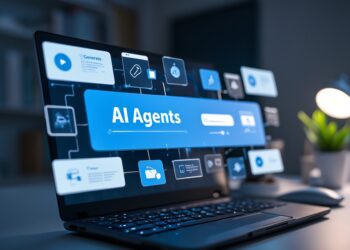DeHaan and his colleagues — Suzie Noh, an assistant professor of accounting at Stanford GSB, PhD student Chanseok Lee, and Miao Liu of Boston College — had created an “AI analyst” to study how much an AI bot, using nothing but public information, was able to improve on the performance of mutual fund managers. They were skeptical of the numbers they kept coming up with. But they could find no problems with their analysis.
“It was stunning,” deHaan says. Between 1990 and 2020, fund managers had generated $2.8 million of alpha, or benchmark-adjusted returns, every quarter. When the researchers’ AI analyst readjusted the human managers’ portfolios, it generated $17.1 million per quarter on top of the actual returns. In short, deHaan says, “AI beat 93% of managers over a 30-year period by an average of 600%.”
When deHaan presented his team’s results to faculty and students last year, one of his colleagues asked, “Why don’t you go start a hedge fund?”
Looking for Missed Opportunities
Though the model took a year to construct, the AI analyst developed its stock-picking acumen over several hours or, at most, days of training. The researchers started by feeding it market data from 1980 to 1990, which it used to correlate 170 variables with future stock performance. Some of these variables were straightforward, like Treasury rates and credit ratings. Others were more sophisticated, such as sentiment analyses of companies’ earnings calls and regulatory filings, simulating how a fund manager might interpret corporate disclosures. The main criterion was that all the variables had to come from public sources that any fund manager would have had readily at hand. Through this process, the AI analyst developed a predictive model of how to invest to maximize returns.
The AI was then given portfolio data from roughly 3,300 diversified U.S. equity mutual funds that were actively managed between 1990 and 2020. Following its model, it tried to improve on the funds’ actual returns by adjusting the fund manager’s portfolio just once per quarter. “The AI couldn’t just go in and invest in whatever it wanted to,” deHaan says. “It tried to selectively tweak the portfolio around the edges using only public information.”
Meet the New Quants
DeHaan and his colleagues also found that the AI analyst was, in a way, not doing anything particularly unusual. When they started the project, the researchers and many people they talked with assumed that the AI would lean on a set of relatively sophisticated variables to make its investment decisions. In fact, it mostly used simple variables, like firm size and dollar trading volume. But it used a complex set of AI techniques to squeeze the most predictive value from this simple data.
What all this means for professional investors is not clear. Its performance suggests that firms are likely to automate the grunt work of data collection, if they haven’t already. “It’s the same story we see with AI in every space,” deHaan says. “The technology raises serious questions about the role of human workers when many of these tasks that are not just routine, but actually quite complicated, are being automated.”
This doesn’t necessarily mean that funds are about to hand over their portfolios to AI traders. “While this is speculation, I would think there will always be a role for clever humans who can guide the process and think in broad ways about strategies that haven’t yet been thought of,” deHaan says.












